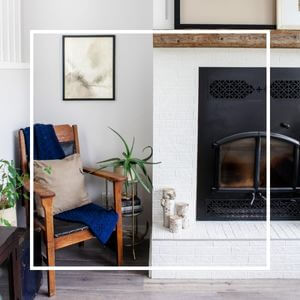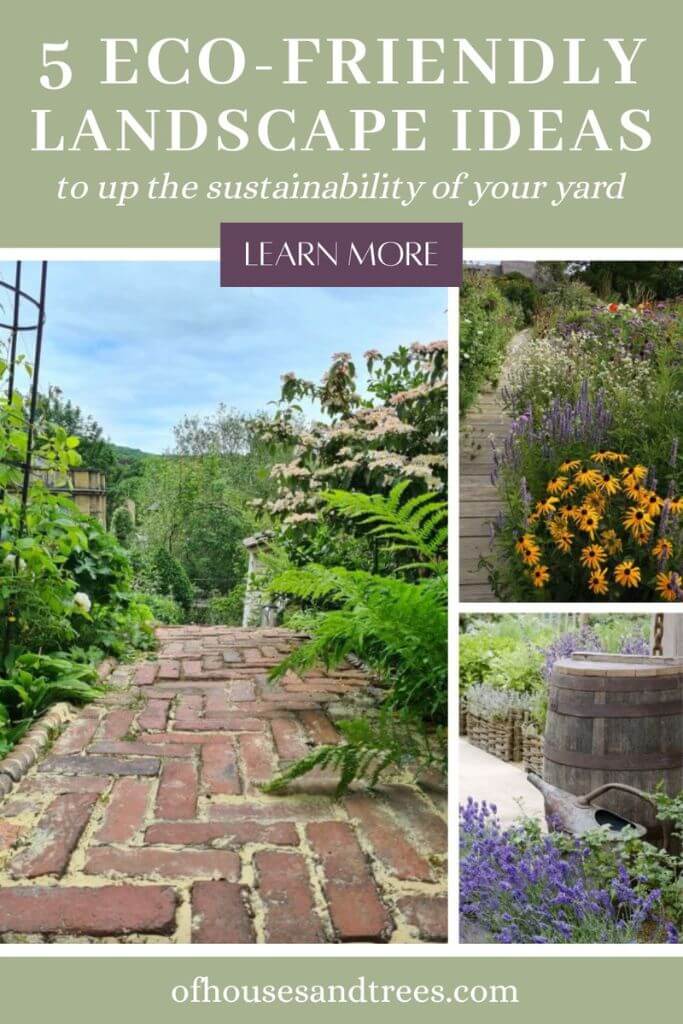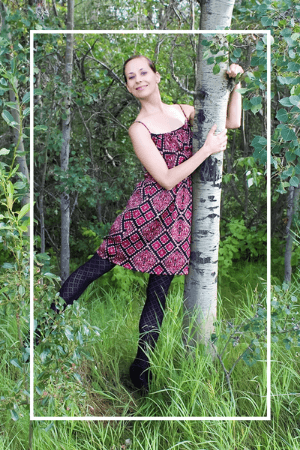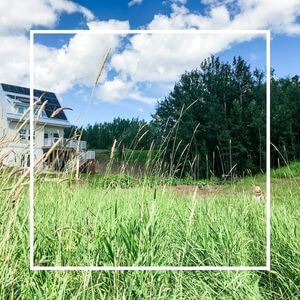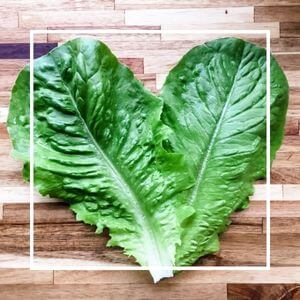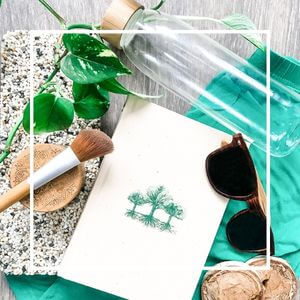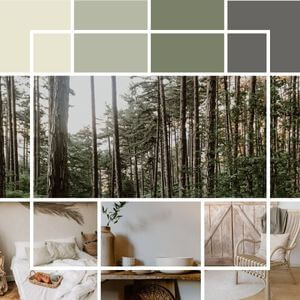These five eco friendly landscape ideas bring together the beauty of a well-cared for outdoor space with today’s best sustainable yard practices.
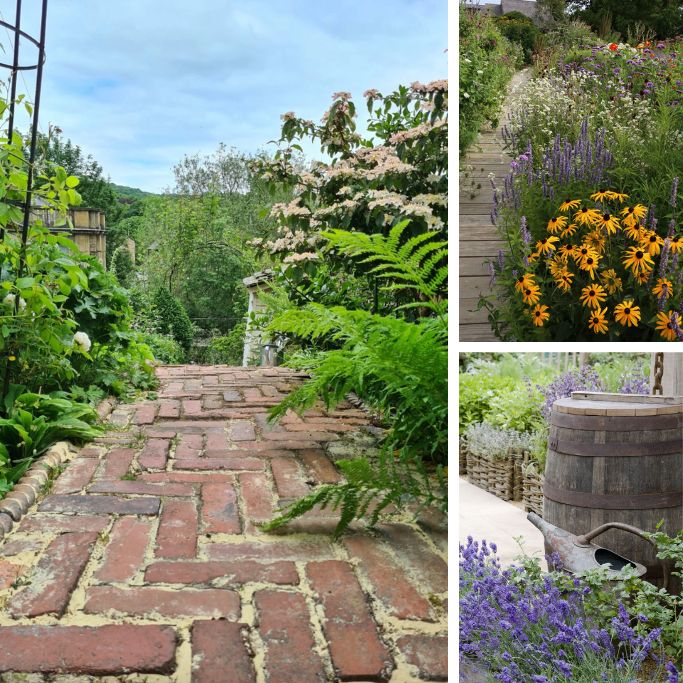
I love a good play on words, which is just another reason why I love talking about green landscaping. They aren’t just green in appearance – they’re green in practice too!
I already have a post about low maintenance landscaping ideas, which has some overlap with the topic of sustainable landscaping. But while that post focuses more on the plants and grasses of it all, this post is going to take a much wider look at what it means for an outdoor space to be sustainable.
From gardens and outdoor structures, to water conservation and emissions management – keep scrolling for a deep dive into creating a sustainable outdoor oasis that places just as much priority on conscious choices as it does on aesthetic ones.
If you’d like to take a detour and learn about what it takes to start a garden from scratch – go here!
Featured Video
What is Eco Friendly Landscape Design?
Okay, so what does “eco friendly landscaping” mean exactly? Well, it means the same thing as sustainable landscaping or environmentally friendly landscaping, which is selecting materials and methods for your yard that minimize environmental harm and encourages the natural world around us to thrive.
I’ve mentioned many times how important it is for human health to connect with and be exposed to nature. And this connection isn’t limited to hikes in the woods or swimming in the lake. Our exposure to nature begins the moment we step outside our door, which is why enjoying our yard spaces while also making sustainable choices is a must.
Incorporating Gardens and Hardscapes
Just because a garden provides greenery doesn’t mean it’s actually “green.” Gardens with high maintenance flowers that require a lot of water to maintain are not a sustainable choice, whereas plants that are native to your region will be much hardier. I also tend to prefer perennials to annuals as the former will come back year after year, which will sae you money and trips to the greenhouse to buy annuals.
Hardscapes include non-living areas of your yard such as patios, decks, retaining walls, pavers and so on. You may think in a sustainable yard you want as much greenspace as possible, but hardscaped areas can be sustainable too – as long as you choose the right materials. Consider permeable pavers for driveways, walkways and patios as they allow water to run through them, instead of runoff into storm sewers and into natural water bodies. Recycled and reclaimed bricks, concrete, stones and glass are other green ideas.
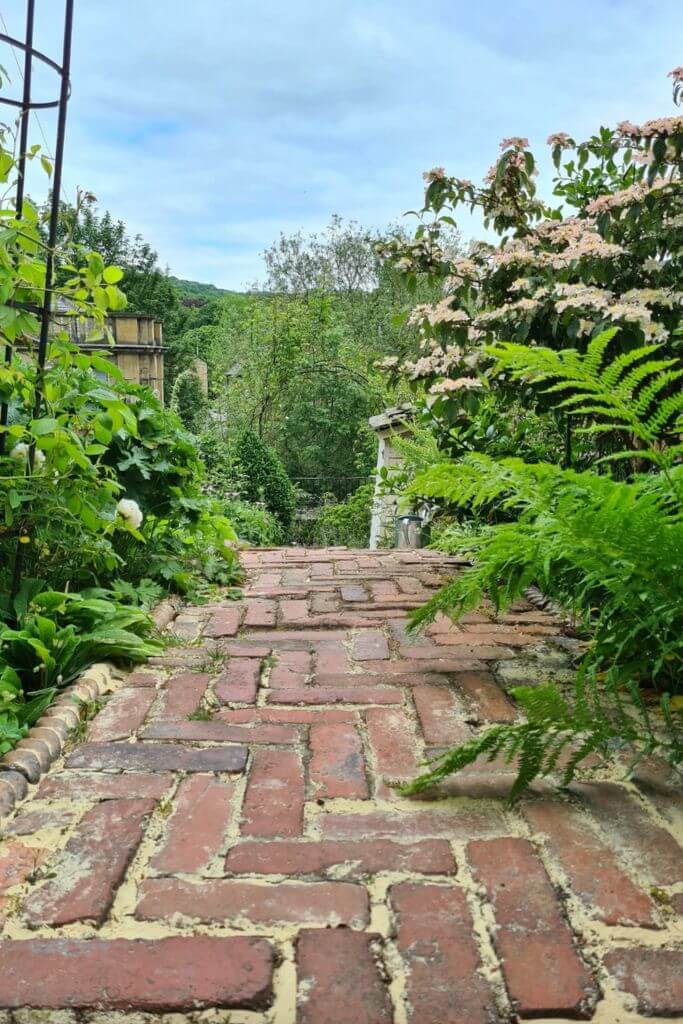
Choosing Sustainable Outdoor Structures
Depending on the size and needs of your yard, you may not want any outdoor structures – or you might want several. And outdoor structure is any type of building – either enclosed or open air – aside from you home. This could include things like a garden shed, greenhouse, gazebo, pool house and so on and so forth.
The same principles that apply to building a sustainable home also apply to your outdoor structures. If you’re able to build them out of reclaimed materials – great! You also may be able to buy full structures, such as a shed or greenhouse, secondhand on a local buy and sell. If you’re looking for something brand new, choose products made from recycled material or sustainable materials. For example, timber frame pavilions made from sustainably-sourced wood is one way to add cover from sun and rain while still blending into your yard’s natural surroundings.

Where to Find Green Outdoor Furniture
I love choosing sustainable furniture for inside the home and I love choosing it for outside the home too. And the process is pretty much the same too. First up, use what you already have. If you don’t like the color – repaint or refinish it. Or, see if you have any family members or friends who want to offload an old patio set or lounge chair and then work your magic to rejuvenate it. Not a DIYer? Try and find something you like as is secondhand at thrift stores and on online marketplaces.
If you can’t find something you like secondhand or prefer something new – that’s okay! There are quite a few outdoor furniture brands that offer stunning new pieces made from sustainable materials like bamboo and recycled plastic. Check out Yardbird for outdoor sectionals made from recycled bottles and Masaya Co for handcrafted reforested teak chairs.
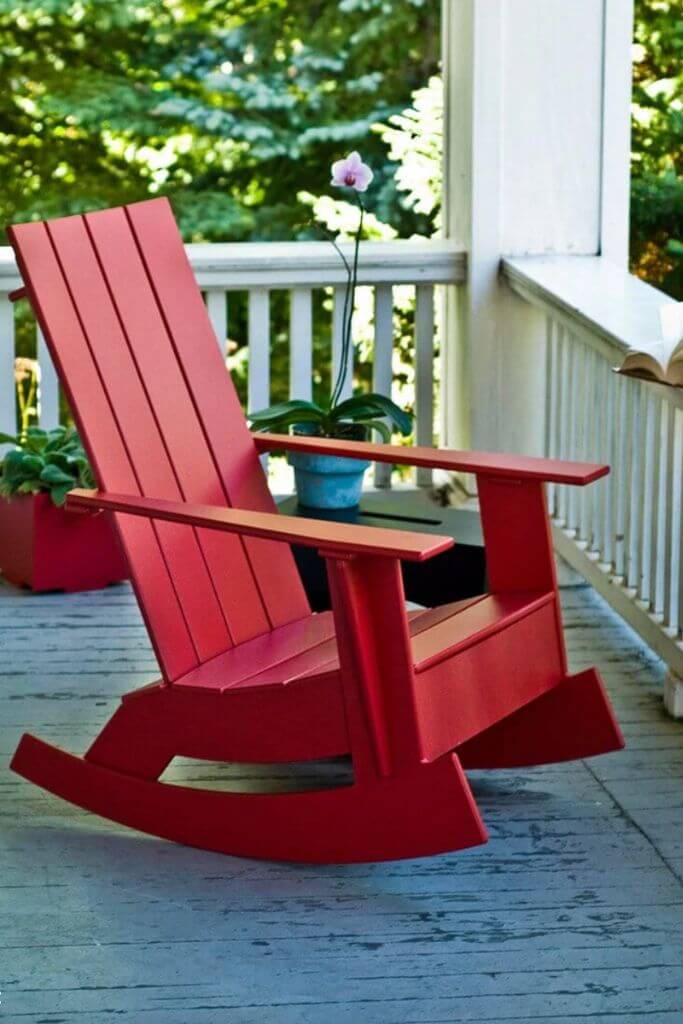
How to Manage Water Use, Chemical Use and Emissions
Of course we care how our backyard looks, but we can’t forget about how the things we do for upkeep can have a negative environmental impact. Here are a few tips on how you can manage water, chemicals and emissions during your ongoing eco landscaping journey.
Water Responsibly
If you’re someone who loves a green, lush lawn, it can be hard to put down the hose. But providing your lawn with frequent, shallow waterings discourages the grass from growing deep roots – making it less able to tolerate drought. Instead, avoid watering or provide it with only one or two deep soakings throughout the season.
As for the other water-needing areas of the yard, using water collected from rain barrels is much more sustainable than using town or city water because it doesn’t put a strain on your municipality’s water source. Plus, it’s free! And, of course, stay away from needy plants that require a ton of water to thrive. They may be pretty, but there are also a ton of beautiful low maintenance plants out there – like hostas and succulents!
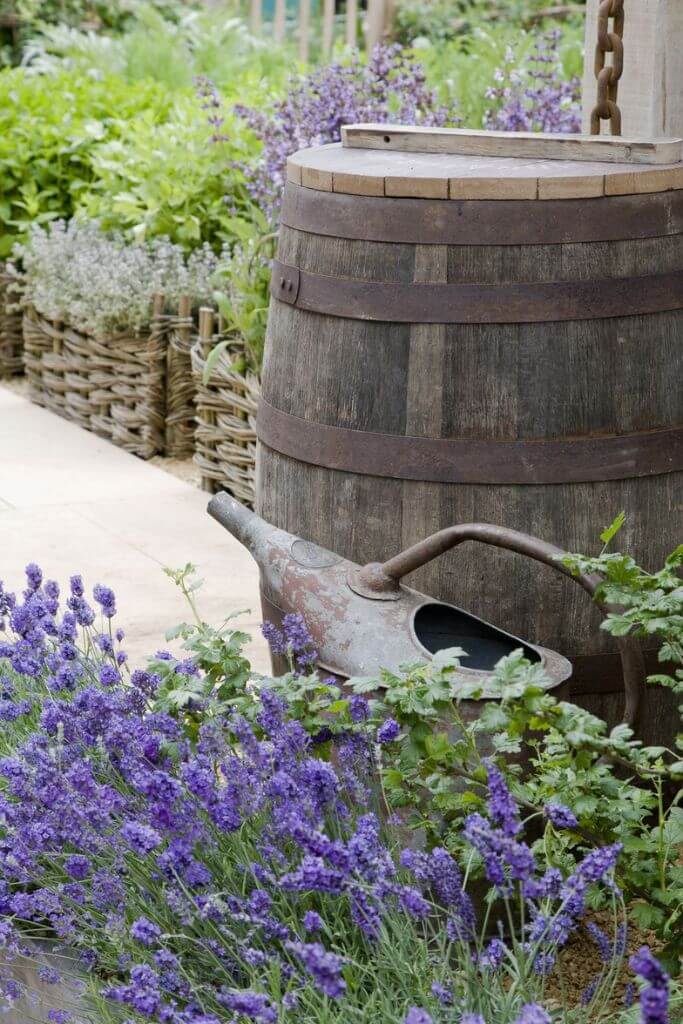
Avoid Chemicals
There are a ton of fertilizers, pesticides and herbicides on the market and the honest truth is you probably don’t need any of them. Make sure to test your soil before adding store bought fertilizers – it may actually be fine as is. If you do need to add something, there are many more natural options like compost and homemade DIY fertilizer.
As for any bug or weed problems, the healthier your soil and plants are the less likely you’ll have problems at all. That being said – bugs and weeds do happen and I tend to either deal with them by hand or with something more earth friendly like a DIY vinegar solution.
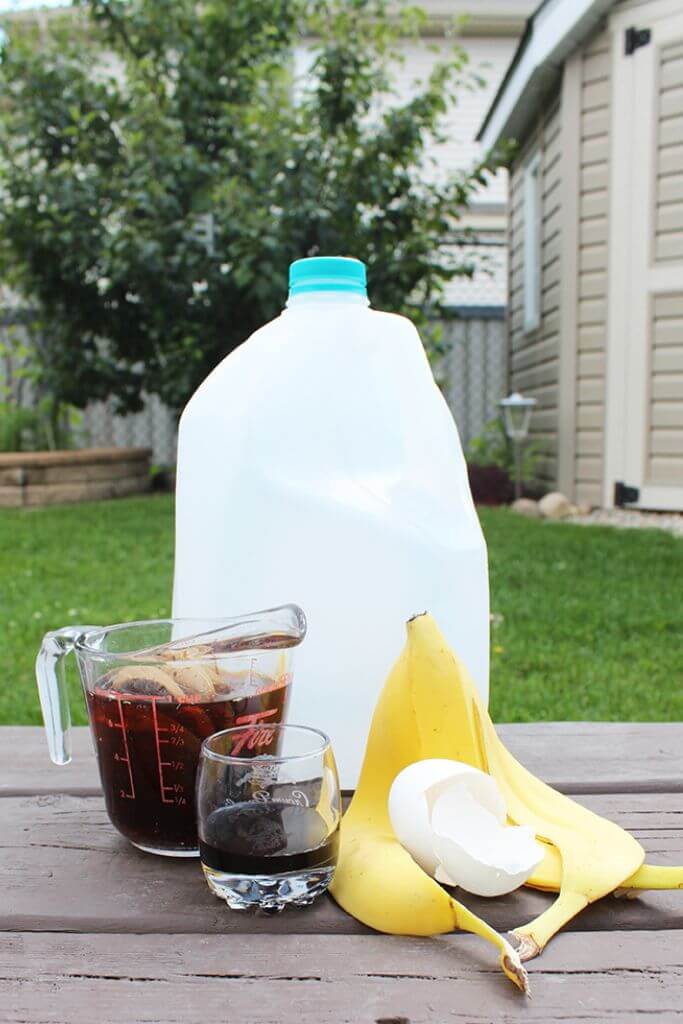
Lower Emissions
Emissions from lawnmowers, leaf blowers and chainsaws all contribute to outdoor pollution. And while forgoing these tools entirely may not be an option, switching to electric or – better yet – human powered tools can help.
You also can simply reduce the amount of time you use them. For instance, allow your grass to grow longer before mowing. Or consider converting part of your yard to a no mow material such as mulch, wildflowers or a rock garden.
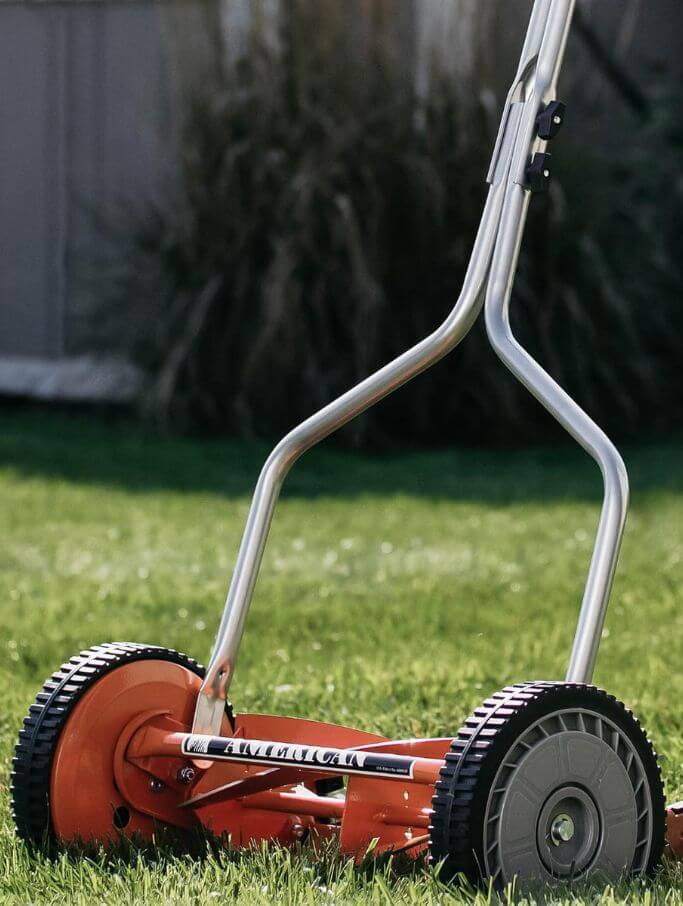
Don’t Forget About the Wildlife!
Now more than ever it is so important to create outdoor spaces that nurture animals and insects, particularly those that are essential to the pollination process. Ensure bees, butterflies and other pollinators visit your outdoor space by planting flowers that will attract them. A few of the many examples include goldenrod, hollyhock, lavender, milkweed and the always lovely sunflower.
Many birds and bats are also pollinators, so putting up bird feeders and bat boxes in your yard will encourage them to stick around. A few types of birds that participate in the pollination process are hummingbirds and orioles. Meanwhile, bats are essential pollinators in desert and tropical climates. But even if you don’t live in one of these areas, bats are still excellent to have around as they eat harmful insects – as well as around 600 mosquitos in an hour!
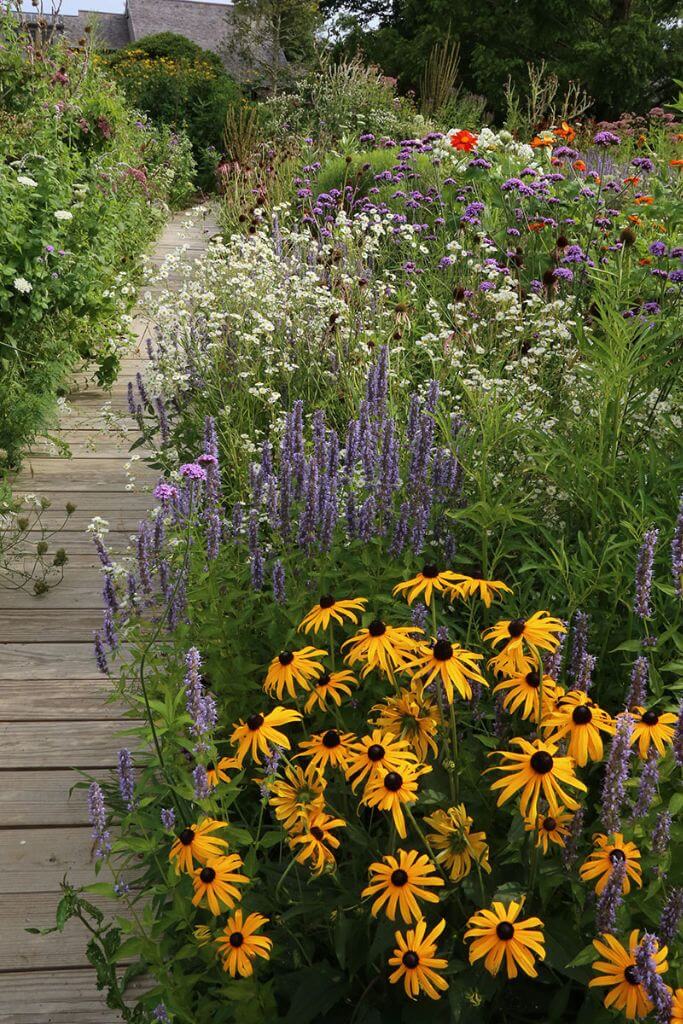
There’s nothing like a post featuring beautiful green landscape designs to get me all excited about improving my own yard. (I’m looking out the window at it right now and envisioning where to put a pollinator garden…)
Have you incorporated any of these green landscaping design ideas into your own outdoor space?
CLICK TO SAVE FOR LATER!
Last Updated on August 16, 2024 (Originally Posted on August 2, 2024)
Former architectural technologist. Current treehugger.
I’m here to help you green your home – and your life.
Subscribe to the Of Houses and Trees monthly newsletter and I’ll send you my FREE list of “The 8 Best Places to Buy Eco-Conscious Decor Online.”
What on earth is sustainable design? Learn all about this eco-focused design method and read the latest posts about green architecture, interior design and decor.
Sustainable living is more than just a thing treehuggers talk about. It’s about making conscious choices everyday. Read the latest posts on living with the planet’s wellbeing always in mind.
Visit the Of Houses and Trees sustainable product directory and support brands trying to make a difference in the world.
Find out more about our 40 acres of land in Parkland County, Alberta and the sustainable home we built amongst the trees.
Need help creating the home of your dreams? Care about the planet? You’ve come to the right place! check out my affordable, sustainable e-design services.
Having a had time choosing paint colours? I’ve got you – and your walls – covered with an interior paint palette sure to compliment your home.
Have questions about creating an eco-conscious home? Go ahead – ask me! Sign up for one of my free online interior design consultations and ask me anything you want.
